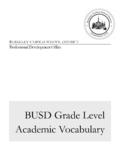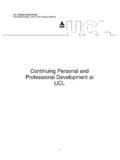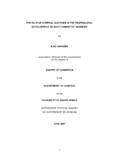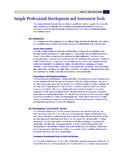Transcription of BERKELEY UNIFIED SCHOOL DISTRICT Professional …
1 1. Draft BERKELEY UNIFIED SCHOOL DISTRICT . Professional development Office BUSD Grade Level Academic Vocabulary BERKELEY UNIFIED SCHOOL DISTRICT . Grade Level Academic Vocabulary Professional development Office 1701 San Pablo Ave Room 18. BERKELEY , CA 94702. Phone Table of Contents 1. Overview .. 2. 5. Explicit Instruction .. 7. Guidelines for Explicit Instruction .. 8. Systematic Practice .. 11. Review and Deep 12. Selecting Vocabulary .. 14. Templates .. 15. Useful Links .. 20. Grade Level Academic Vocabulary List .. 22. High SCHOOL Level .. 23. Middle SCHOOL Level .. 25. Elementary 28. Alphabetical List for Quick Reference .. 34. Bibliography .. 36. B U S D P R O F E S S I O N A L D E V E L O P M E N T. Acknowledgements Many teachers have given input to this manual and the list itself. The following BERKELEY educators contributed hours of work synthesizing the current research, best practice, and their Professional expertise.
2 BUSD K-12 Academic Vocabulary Team Heather Tugwell, Coordinator Caitlin Alastra Dana Blanchard Jamie Carlson Monique DeBrito Victoria Edwards Kathleen Gadway Allison Kelly Nabila Massoumi Angelica Perez Heidi Ramirez-Weber Veronica Valerio Special Thanks to: Neil Smith, Co-Superintendent Christina Faulkner, Director of Instructional Services Veronica Valerio, BUSD Professional development Coordinator Cathy Campbell, BERKELEY Federation of Teachers President BUSD Grade Level Academic Vocabulary Manual by Heather Tugwell 1. Overview One of the major instructional shifts in the Common Core State Standards (CCSS) is A C O M M O N. the renewed focus on the importance of general academic vocabulary. B A S E L I N E O F. A C A D E M I C The BUSD Grade Level Academic Vocabulary List is designed to help BERKELEY V O C A B U L A R Y. UNIFIED SCHOOL DISTRICT systematically enhance the academic vocabulary of all of our students to better prepare them to learn the new Common Core State Standards.
3 It is an articulated list of general academic vocabulary required at each grade level in all subject areas. Effective It is widely accepted among researchers that implementation will ensure that all BUSD students share a the difference in students' vocabulary levels common baseline of rich, complex vocabulary terms is a key factor in disparities in academic necessary for engagement in the academic discourse achievement but that vocabulary required by the CCSS. instruction has been neither frequent nor This work is aligned with the current research on systematic in most schools vocabulary development , the DISTRICT policy on equity, the Appendix A of Common Core State Standards BUSD 2020 Vision, the Common Core Standards, local assessments, and SBAC release items. BUSD has taken a DISTRICT -wide systematic approach to general academic vocabulary instruction because the leading research indicates that tier two vocabulary words are Not unique to a particular discipline and therefore not usually the focus of vocabulary instruction Far less defined by contextual clues Frequently encountered in a variety of academic contexts Widely applicable in academic speaking and writing Following the vocabulary development work of Beck, McKeown and Kucan, the CCSS references three tiers of words that are vital to academic achievement: Tier One words are the words of everyday speech usually learned in the early grades.
4 General Academic Tier Two words (what the Standards refer to as general academic words) are far more likely to appear in Words are Often written texts than in speech. They appear in all sorts of texts: informational texts (words such as relative, vary, Referred to as Tier formulate, specificity, and accumulate), technical texts (calibrate, itemize, periphery), and literary texts (dignified, Two Words faltered). Tier Two words often represent subtle or precise ways to say relatively simple things saunter instead of walk, for example. Because Tier Two words are found across many types of texts, they are highly generalizable. Tier Three words (what the Standards refer to as domain-specific words) are specific to a domain or field of study (lava, legislature, circumference, aorta) and key to understanding a new concept within a text Recognized as new and hard words for most readers (particularly student readers), they are often explicitly defined by the author of a text, repeatedly used, and otherwise heavily scaffolded ( , made a part of a glossary).
5 - Common Core State Standards, CHECK OUT THIS VIDEO by Engage NY. 2. Academic Vocabulary Instruction for Equity After decades of collaborating to increase child language vocabulary, Betty Hart and Todd Risley spent 2 years intensely observing the language of 42 families. Specifically, they looked at household language use in three different settings: 1) Professional families; 2) working class; 3) welfare families. Hart and Risley gathered an enormous amount of data during the study and subsequent longitudinal follow-ups to come up with an often cited 30 million word gap between the vocabularies of welfare and Professional families by age three. Analysis of the data suggests that an even greater disparity exists in BERKELEY . Systematically addressing the difference in our students' vocabulary is one of the ways to decrease the achievement gap in BUSD. 3. Selection Criteria A team of BERKELEY teachers, language development experts, and literacy specialists used the following criteria to cull words from the Coxhead Academic Word List, the list of EAP Academic Words, Dr.
6 Kate Kinsella's Academic Word Lists, and other lists including common headwords, roots, suffixes, prefixes, and Spanish cognates, in conjunction with the Common Core State Standards, TCRWP and other BUSD. language arts curriculum, as well as lists used in other. The General Academic (Tier Two) words were carefully selected based on the following criteria: Each word on the list . is portable; it is likely to appear across subjects at that grade level and beyond, is vital to comprehension of academic text, helps students express their academic understanding, is essential for participation in academic discussions and writing, and is not typically used by students* without explicit instruction * Particularly students in historically underserved subgroups who are not yet proficient on standardized measures of achievement 4. Implementation Academic Vocabulary Instruction is no longer the sole responsibility of the Language Arts teacher.
7 The CCSS requires that the shared responsibility of literacy instruction include general academic vocabulary instruction in all subject areas. DISTRICT , Site, and Teacher Roles It is the DISTRICT 's role to provide this document which includes the BUSD Grade Level D I S T R I C T. Academic Vocabulary List to every teacher and administrator. The PD Office will R O L E provide Academic Vocabulary development training to accompany the list. The PD. Office will also provide additional training at sites upon request. The preliminary list is subject to change as we learn more through implementation and as more information about the language demands of the SBAC is made available for alignment. It is the principal's role to monitor and support effective implementation. Sites are S C H O O L S I T E. encouraged to provide grade level collaboration time for teachers, including specialists, R O L E to strategize on when and how to teach the words as well as plan which text-based and Tier Three words to also teach.
8 Principals and teacher leaders should contact the PD. Office for Academic Vocabulary development PD at their site. There are two approaches for SCHOOL sites to choose from: Autonomy One to Two words from the list are taught per week at each teacher's discretion Approach Benefits of the Autonomy Approach o The context in which the words are taught is more authentic o Allows more creativity in planning for vocabulary instruction o Allows teachers to group the words in ways that make sense to them Drawbacks of the Autonomy Approach o Requires more systematic planning for each teacher o Requires coordination among classroom teachers, resource teachers, and specialists o Is harder to monitor Words of the Week Two words per grade level are taught and emphasized SCHOOL wide each week Approach Benefits of the Words of the Week Approach o The entire SCHOOL is focused on particular words at each grade level o Does not require teachers to map out when each word will be taught.
9 O Is easier to monitor Drawbacks of the Words of the Week Approach o Using the words of the week in context in every subject in a given week may be a challenge leading to less authentic student practice 5. At the elementary level, it is the classroom teacher's role to introduce and explicitly TEACHER teach the words (See guidelines on page __). The specialist teachers must intentionally ROLE reinforce the same words, requiring students' regular and accurate use of them within their specific content. Note: See page __ for tips on how to reinforce the words across the curriculum At the secondary level, while teaching students how to use the words throughout the SCHOOL day. accurately and requiring their fluent use is the shared responsibility of all teachers, the ELA teachers must develop students'. deeper knowledge of the words through word work such as parts of speech, semantic word webs, and other language arts techniques.
10 All other teachers will teach (Autonomy Approach ) and/or reinforce (Words of the Week Approach) and require students' regular and accurate use of the words in their specific content. It is a DISTRICT expectation that the words on the BUSD Grade Level Academic TEACH FOR. Vocabulary List be taught for mastery over the course of the SCHOOL year. Teaching MASTERY vocabulary for mastery means that it enables students to know and use the words accurately without hesitation. This requires explicit instruction of the terms that includes practice, review, and deep processing. Instruction must be cumulative, with the terms integrated into increasingly complex tasks requiring them to be applied to multiple contexts. The BUSD Grade Level Academic Vocabulary List is by no means totally FOCUS FOR representative of all words students should learn, nor is it to be used for busy work, INSTRUCTION homework packets or spelling lists.





